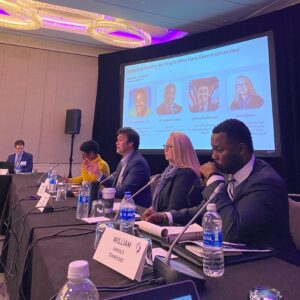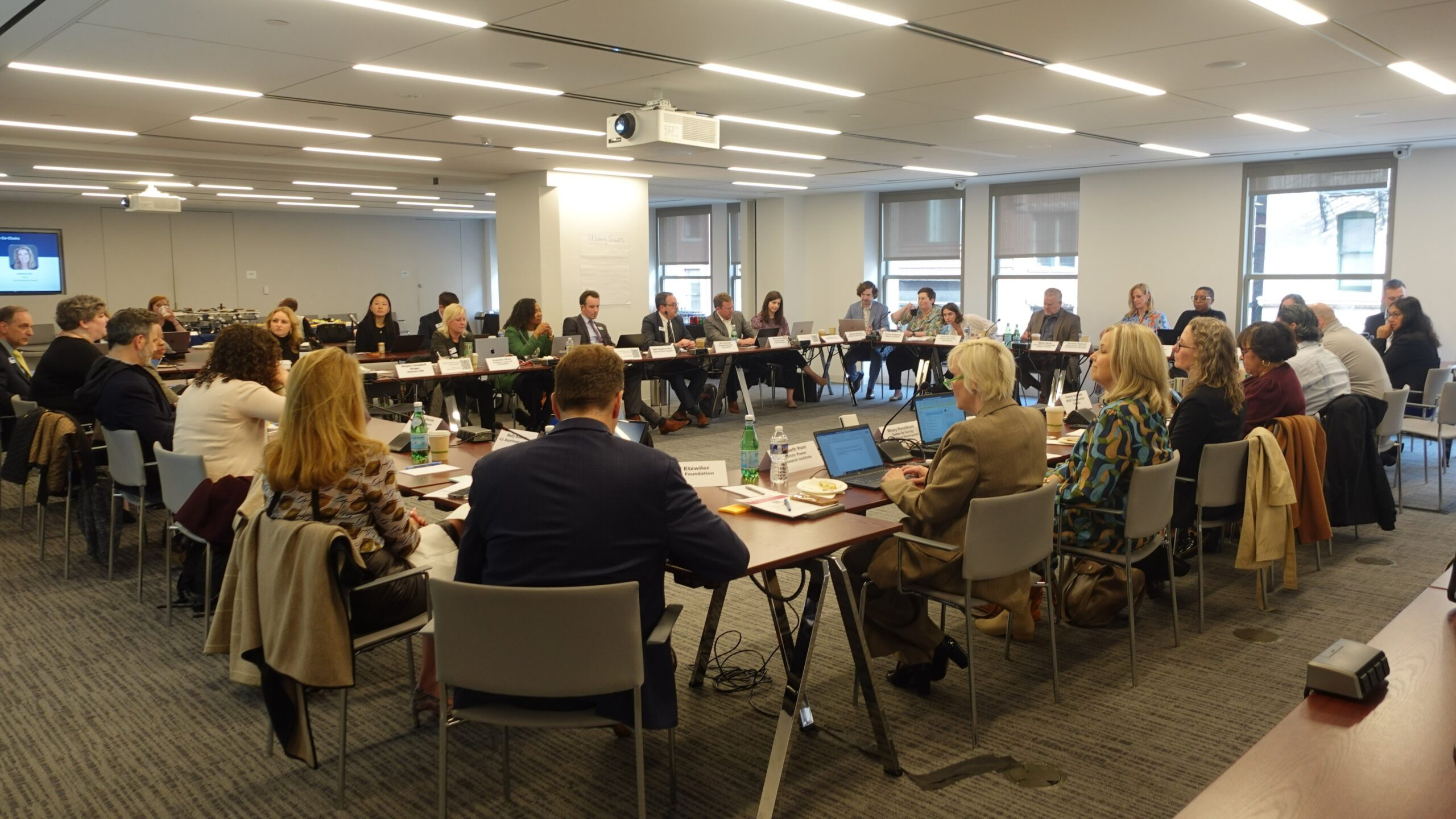As Governors continue to address workforce shortages in nearly every sector of the economy, state workforce development policymakers and their private sector partners remain focused on increasing labor force participation by reducing barriers to training and employment. During the National Governors Association’s (NGA) Winter 2023 Workforce Symposium, the National Association of State Workforce Board Chairs (Chairs Association) – an affiliate network of the NGA Center for Best Practices – heard from public- and private-sector leaders about strategies to support justice-involved individuals by connecting them to training, supportive services, and long-term employment opportunities.

Moderated by Dr. Lucretia Murphy, Vice President and Director for Justice and Economic Advancement at Jobs for the Future, the panel featured Alisher Burikhanov, Executive Director of the Kentucky Workforce Innovation Board; Dr. William Arnold, Director of the Tennessee Office of Reentry; and Nan Gibson, Executive Director of Second Chance, Economic Security Net, and Careers & Skills at the JPMorgan Chase PolicyCenter. The discussion highlighted Governors’ leadership in developing promising state models for supporting successful workforce reentry.
In 2022, Kentucky Governor Andy Beshear launched the Prison-to-Work Pipeline, a unique partnership between the state’s prisons and local jails and the state chamber of commerce to connect justice-involved individuals with employers with the goal of securing permanent employment before reentry. Individuals receive résumé and interview assistance, and the chamber facilitates virtual interviews with businesses across the state. The Tennessee Office of Reentry was established in 2021 as part of Governor Bill Lee’s vision to improve outcomes for justice-involved individuals. As one of the only state reentry programs housed in the state workforce agency, the office promotes education, training, and employment as evidence-based strategies to reduce recidivism.
Building partnerships across state agencies, community-based organizations, and employers is critical in reducing stigma and supporting the long-term effectiveness of reentry programs. Interagency partnerships that encompass stakeholders from workforce development, corrections, education, occupational licensing, and other entities can help provide the range of services and tools needed to prepare individuals for successful reentry. For example, the Tennessee Reentry, Employment, and Adult Education Program (Project R.E.A.P.) is a collaboration among workforce, adult education, and corrections agencies that provides tablets to county jails to enable individuals who are incarcerated to complete required coursework to prepare for the HiSET high school equivalency exam. Employer buy-in is key to making the business case for hiring and retaining justice-involved individuals, as evidenced by groups such as the Second Chance Business Coalition, a cross-sector coalition of large private-sector companies committed to expanding second chance hiring and advancement practices.
“State workforce boards play a key role in coordinating these partnerships to provide justice-involved individuals with opportunities to succeed in the workforce, and it is encouraging to see the many state best practices that are being shared among our association members,” said Mark Tyler, Chair of the National Association of State Workforce Board Chairs, Chair of the Wisconsin Governor’s Council on Workforce Development, and Founder and Chairman of OEM Fabricators, Inc.
The Chairs Association then heard from private- and public-sector experts on the role employers play in reducing barriers to employment more broadly. This second panel explored employer engagement models including leveraging the state workforce board as a convener to understand employer needs and disseminate resources and invest in employer-led training programs like registered apprenticeships – a key pillar of Governor Kim Reynolds’ Future Ready Iowa plan. New Hampshire Governor Chris Sununu joined to highlight the New Hampshire Recovery Friendly Workplace Initiative, a program launched by Gov. Sununu in 2018 to provide businesses with resources to foster a supportive environment that encourages the success of employees in recovery.
“Governors are tackling workforce shortages from every angle—from targeting historically underserved populations with the greatest barriers to entry, to partnering with employers to increase access and flexibility for workers—and the NGA Center for Best Practices is pleased to provide assistance to state workforce systems in advancing policies to meet these challenges,” said Rachael Stephens Parker, Program Director for Workforce Development & Economic Policy at the National Governors Association Center for Best Practices.
This article was developed by Sophia Yager, Policy Analyst, NGA Center for Best Practices. The biannual NGA Workforce Symposium is hosted by NGA’s Workforce Development & Economic Policy program as part of its Workforce Development Technical Assistance Program. These meetings convene two affiliates of the NGA Center for Best Practices: the National Association of State Workforce Board Chairs and the National Association of State Liaisons for Workforce Development Partnerships. The next Symposium will be hosted in Fargo, North Dakota, in August 2023. For more information about the Workforce Development Technical Assistance Program or the affiliate associations, please contact our Workforce Development and Economic Policy team at: workforcedevelopment@nga.org












